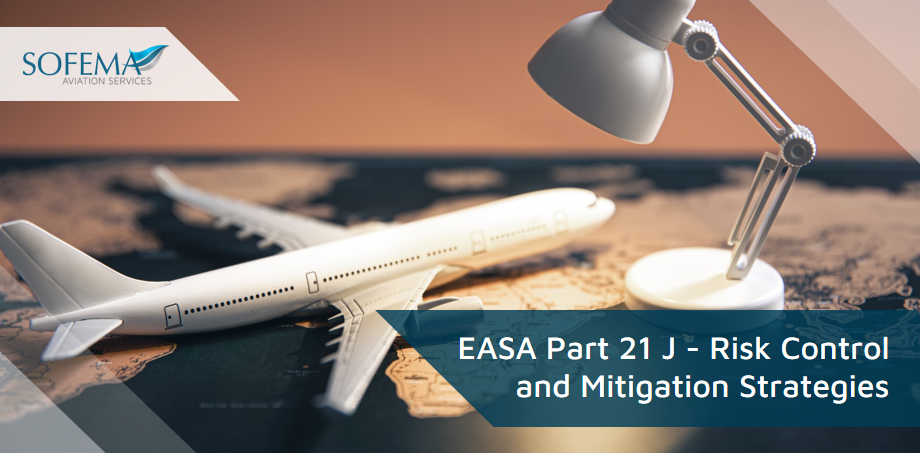Sofema Online (SOL) www.sofemaonline.com considers the process of ensuring effective risk control and mitigation strategies within an EASA Part 21J SMS
Introduction
For EASA Part 21J SMS, implementing effective risk control and mitigation strategies involves a combination of hazard identification, safety risk management, and continual monitoring to ensure compliance and manage potential hazards associated with design activities.
Challenges in Risk Control and Mitigation
- Complexity of Hazard Identification: Identifying all potential hazards, especially in complex design projects involving multiple stakeholders and intricate systems, can be challenging.
>> Hazards may vary across product levels, documentation levels, and organizational changes.
- Managing Human Factors (HF): Human performance impacts safety significantly, especially in complex organizations.
>> Ensuring that HF considerations are adequately addressed, especially during transitions or changes, is critical but can be complex to manage.
>> Training design teams to understand human factors, such as cognitive biases, can mitigate errors during design and analysis.
>> By learning about common biases, such as overconfidence or anchoring, engineers can make better-informed decisions and stay vigilant in risk-sensitive areas.
Integration of Safety and Production Systems:
>> Ensure SMS is embedded into all organizational activities rather than layering it as an additional system
>> Organizational changes, such as new procedures or technologies, can introduce new risks or alter existing ones.
- Managing these changes proactively while assessing safety impacts is necessary to maintain safety integrity.
Best Practices for Risk Control and Mitigation
- Structured Risk Management Processes: Adopting a structured risk management process with proactive, reactive, and predictive approaches helps in thorough hazard analysis and risk assessment.
- Continuous Safety Monitoring: Regular safety performance monitoring, including safety audits, safety surveys, and trend analysis, enables organizations to keep track of potential issues and adjust mitigation strategies as necessary.
- Safety Promotion and Training: Promoting a positive safety culture through training, education, and open communication encourages personnel at all levels to participate in safety management actively.
- Regular Safety Communication: Helps ensure awareness and supports the development of a “just culture,” where individuals feel safe to report issues without fear of reprisal
- Management of Change: Implementing a documented process for managing change helps in identifying and mitigating risks related to internal or external changes that may impact safety.
>> Includes revisiting previous risk assessments and existing hazards for potential effects during transitions
Procedures for Human Error Reduction
- Standard Operating Procedures (SOPs): Well-documented, standardized processes are essential in mitigating human error in complex design work.
>> These SOPs should cover critical activities such as design reviews, testing, and verification, ensuring that each step follows established safety and quality standards.
- Checklists and Verification Processes: Creating mandatory checklists and peer-review processes for high-risk design elements or modifications can help reduce human error.
>> For instance, a checklist might require engineers to confirm compliance with regulatory standards before a design passes to the next phase.
- Management of Change (MoC) Process
- Any significant change—be it organizational, procedural, or technical—requires a structured MoC process to assess its safety impact. Practically:
>> A change impact assessment should be performed, especially for changes involving critical design components.
>> Engage relevant stakeholders early to identify potential impacts and allow for contingency planning.
>> Document all change-related evaluations, actions, and lessons learned to ensure traceability and continuity in safety practices.
Next Steps
Follow this link to our Library to find & download related documents for Free.
For more information, visit the following training course: EASA Part 21 Subpart J Safety Management System Implementation – 2 Days or contact us at team@sassofia.com.
Tags:
Human Factors (HF), Regular Safety Communication, EASA Part 21 J, critical design, Production Systems, Strategies Considerations, Continuous Safety Improvement, Standard Operating Procedures (SOPs), Aviation Management of Change, mitigation strategies, aviation, Challenges, Management of Change (MOC), Risk Control, Airline Safety, SAS blogs, Hazard Identification, Risk Management, Human Error




